Avra: Enhancing B2Bi Connectivity Understanding the World of B2Bi with...
Read MoreIn today’s hyper-connected business landscape, the effective exchange of data and information between organisations has become paramount. Business-to-Business Integration (B2Bi) plays a pivotal role in facilitating this seamless data flow between disparate systems, allowing businesses to operate efficiently and collaborate effectively. As organizations increasingly rely on digital ecosystems to drive their operations, the role of B2Bi as middleware has never been more crucial.
However, as technology evolves, so do the requirements of the systems it connects. In this blog, we’ll delve into the world of B2Bi as middleware, exploring its significance, the evolving needs of the systems it sits between, and how tools like IBM B2Bi, services, adapters, and system frameworks must adapt to stay relevant in this ever-changing landscape.
B2Bi is ofter described as a middleware application. However as we will find this is a very broad description. So what is middleware? A dictionary definition…
computer software that has an intermediary function between the various applications of a computer and its operating system
This was probably correct in the 1980’s but we can expand that and say middleware sits between any type of different systems and offers an interface between them. As we will see middleware constantly needs to evolve to meet the needs of the systems it sits in between.
So what makes up an interface then? Typically any system will offer up a generic input and output mechanism. It will be comprehensive enough to do the job but flexible enough to meet all the needs. Those needs will vary. They may need to interface with everything from Barcode scanners to automated robots, from banks to testing labs.
When you break down interfaces it is all about getting data from one place to another. So all of the following are examples of Interfaces
While trying to categorise these interfaces I found that they all started to blend into one another. That is because they have to evolve to meet the needs of the systems that they talk to regularly.
In summary middleware evolves to meet the needs of the systems it interfaces on a regular basis.
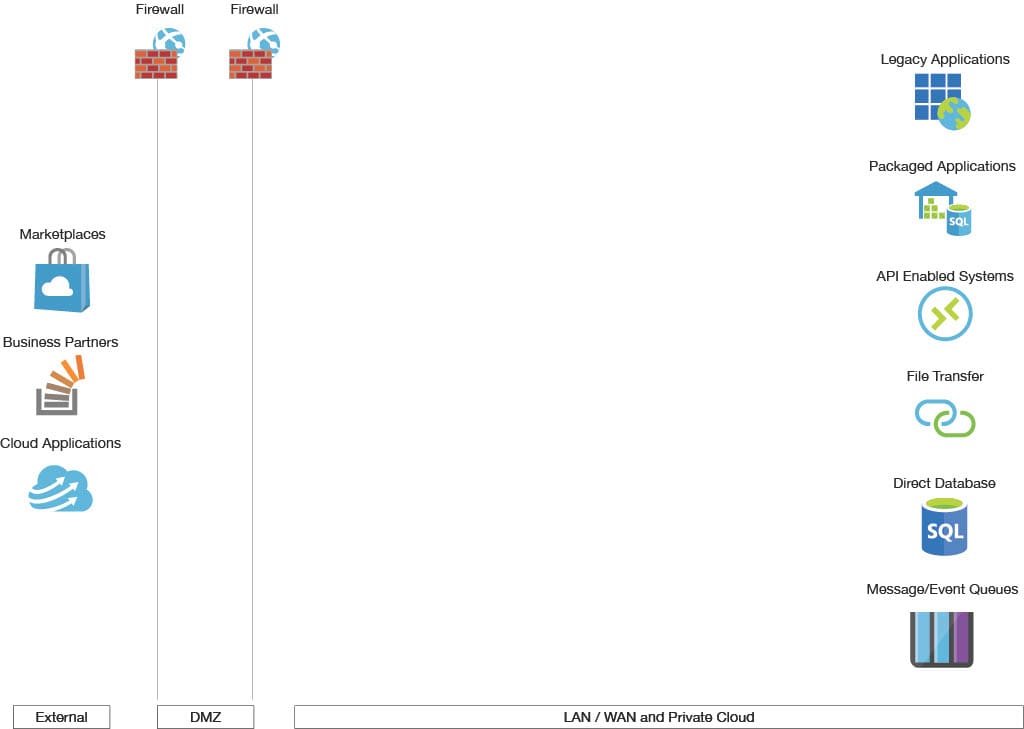
A typical business will have a number of these internal components within their business that they deal with day to day.
Externally a company will need to talk to their Market Place, collaborate with their Business Partners and more recently access cloud based applications securely and reliably. All the internal methods could apply but as it is external additional security measures, tighter size restrictions for example are needed.
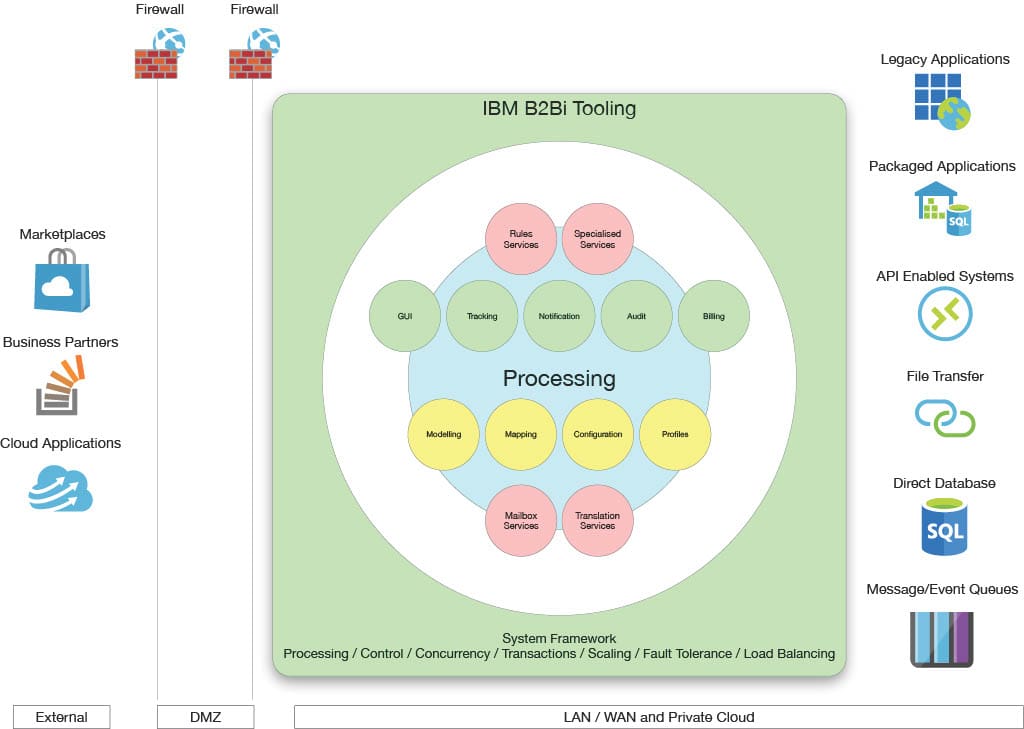
Before tackling the interfaces themselves a framework is required to maintain integrity and data flow as will any middleware system. A set of tools exist and these can be described as the following

Each service and adapter does a unique function but they all work in a similar way.
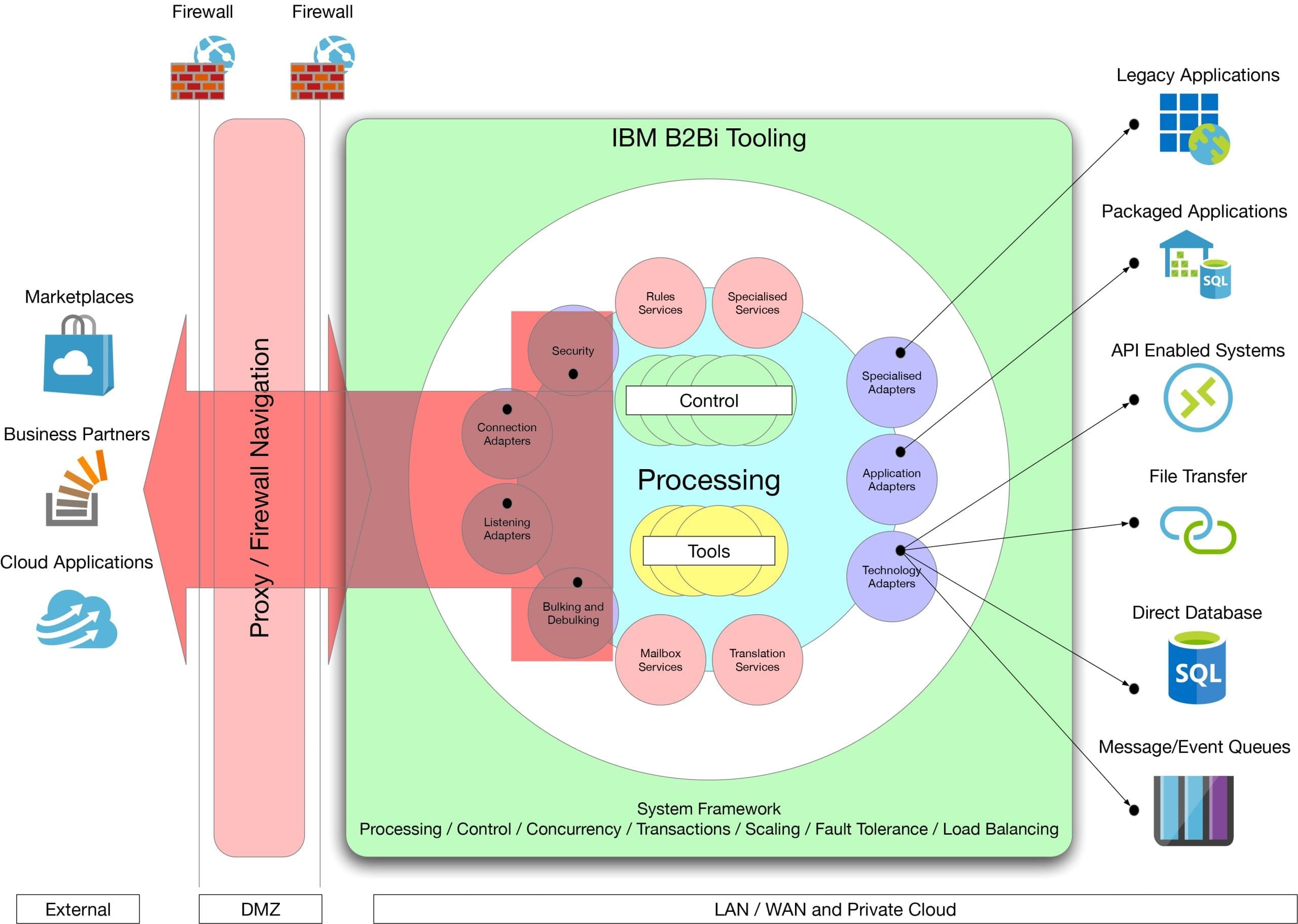
A special mention to the role of the perimeter server which is a proxy server allowing any of the external facing adapters inbound and outbound to communicate through a single outbound connection to the DMZ. This makes for, in many cases, a simple one off firewall configuration change which will allow many different connections to be configured.
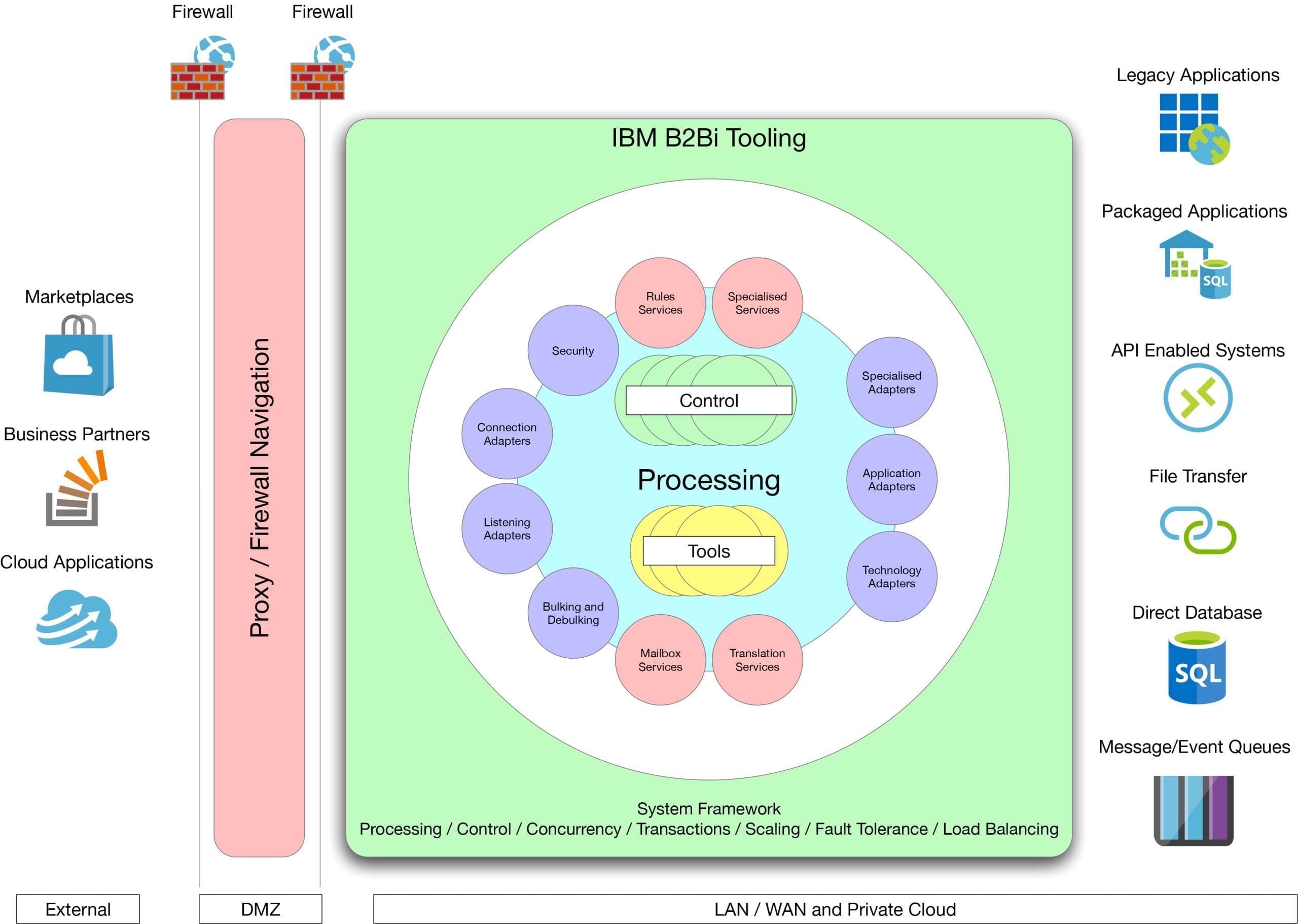
A middleware tool needs to fit into any environment and be comfortable processing 5000 files a day or 5000 files a minute. To meet these needs a flexible architecture is required that is able to process these demands.
B2Bi as middleware is a crucial enabler of modern business operations. Its ability to adapt and bridge the gap between disparate systems ensures the seamless exchange of data, powering businesses to thrive in an interconnected world. As technology continues to advance, B2Bi will remain at the forefront of innovation, serving as the vital link that propels businesses forward in their digital transformation journeys. If you’re eager to harness the full potential of B2Bi solutions and unlock the benefits they offer in today’s ever-evolving business landscape, reach out to Coliance.
Avra: Enhancing B2Bi Connectivity Understanding the World of B2Bi with...
Read MoreStreamlined Compliance and Cost Savings: Unleash the Full Potential of...
Read More“Unveiling the Menace: Runaway Processes and the Looping Threat to...
Read MoreAgora utilises Eliassen’s Framework 10 opportunities to improve your partner...
Read MoreSupply Chain Improvement Improving the visibility of your supply chain...
Read MoreAuthor Chris Thorpe
Technical Director
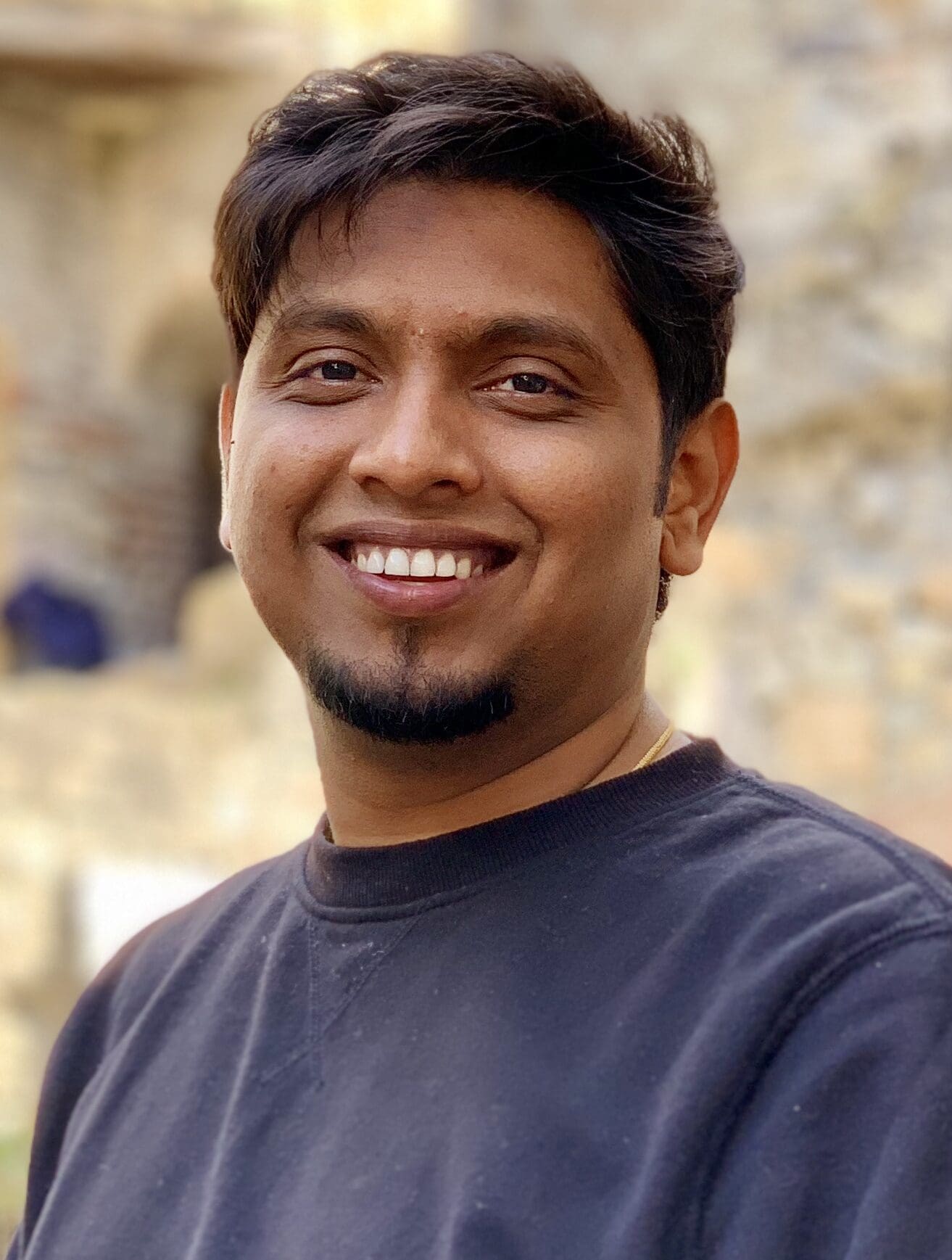

Coliance © 2023 All rights reserved